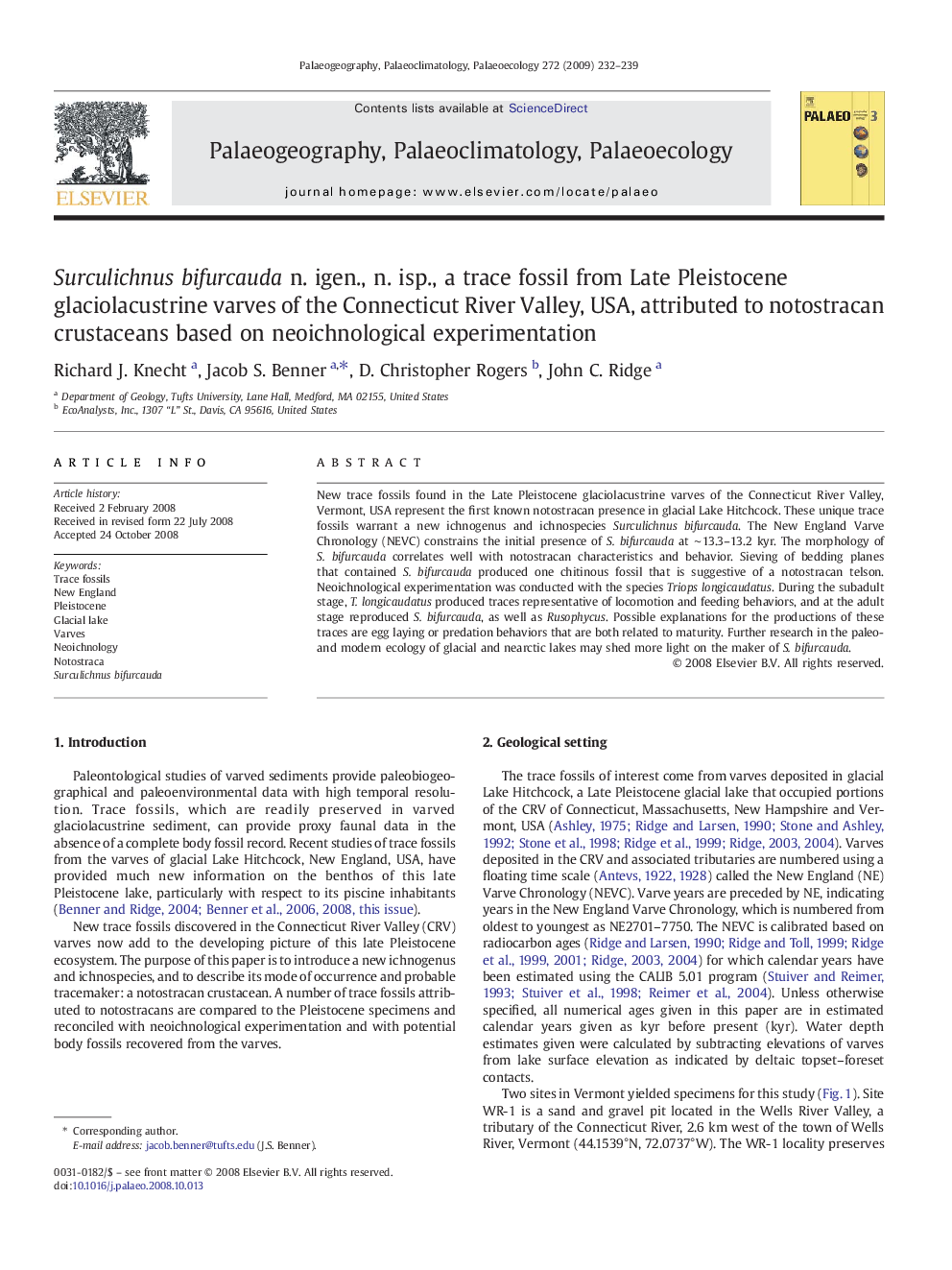| Article ID | Journal | Published Year | Pages | File Type |
|---|---|---|---|---|
| 4468283 | Palaeogeography, Palaeoclimatology, Palaeoecology | 2009 | 8 Pages |
New trace fossils found in the Late Pleistocene glaciolacustrine varves of the Connecticut River Valley, Vermont, USA represent the first known notostracan presence in glacial Lake Hitchcock. These unique trace fossils warrant a new ichnogenus and ichnospecies Surculichnus bifurcauda. The New England Varve Chronology (NEVC) constrains the initial presence of S. bifurcauda at ∼ 13.3–13.2 kyr. The morphology of S. bifurcauda correlates well with notostracan characteristics and behavior. Sieving of bedding planes that contained S. bifurcauda produced one chitinous fossil that is suggestive of a notostracan telson. Neoichnological experimentation was conducted with the species Triops longicaudatus. During the subadult stage, T. longicaudatus produced traces representative of locomotion and feeding behaviors, and at the adult stage reproduced S. bifurcauda, as well as Rusophycus. Possible explanations for the productions of these traces are egg laying or predation behaviors that are both related to maturity. Further research in the paleo- and modern ecology of glacial and nearctic lakes may shed more light on the maker of S. bifurcauda.
